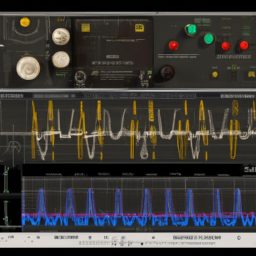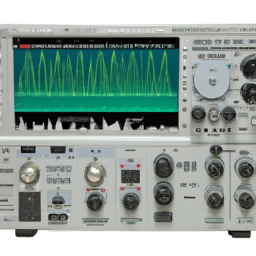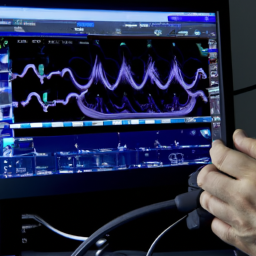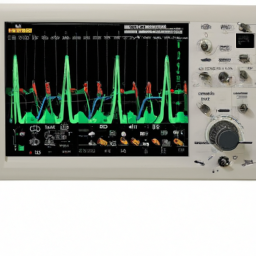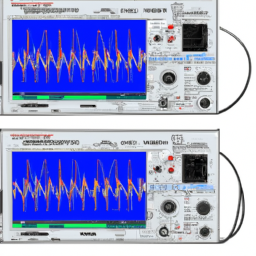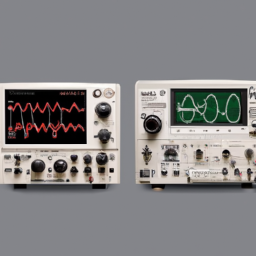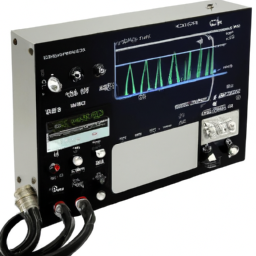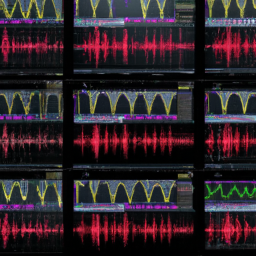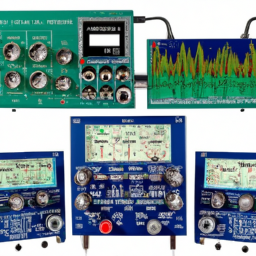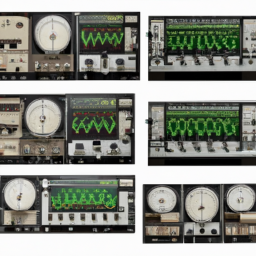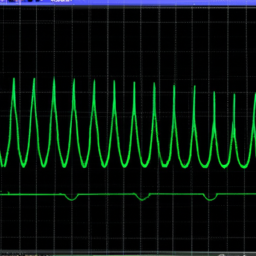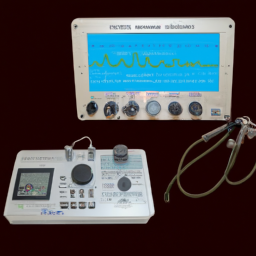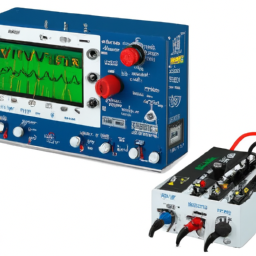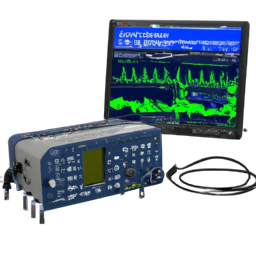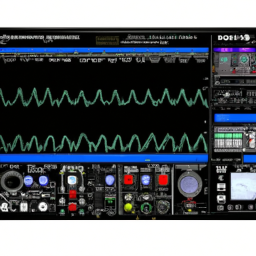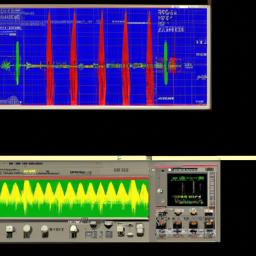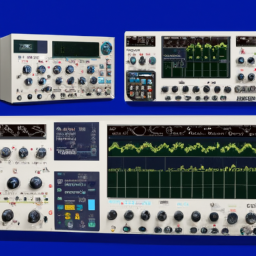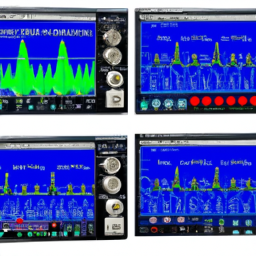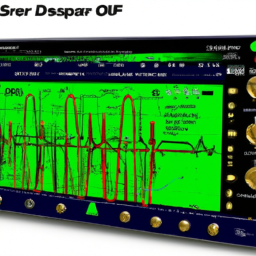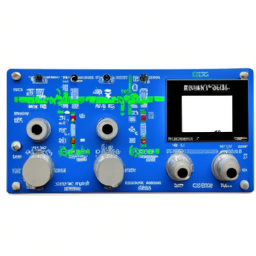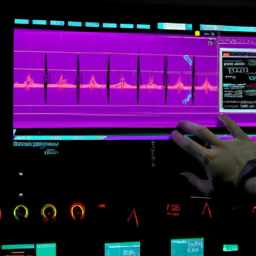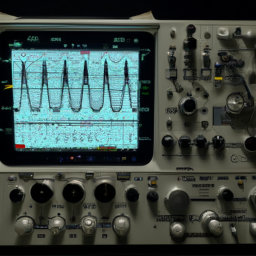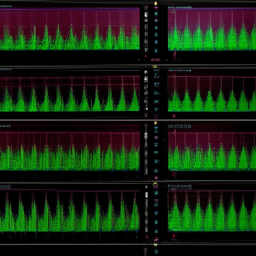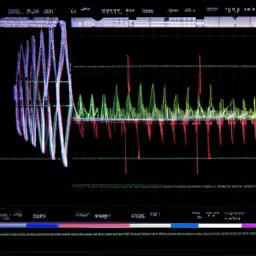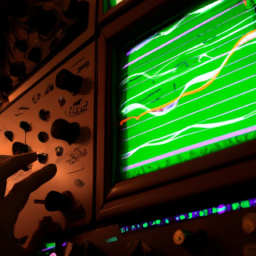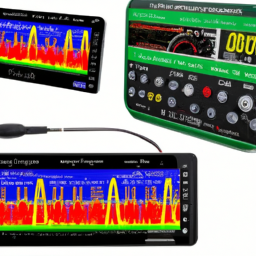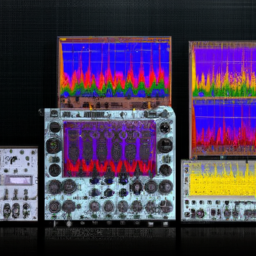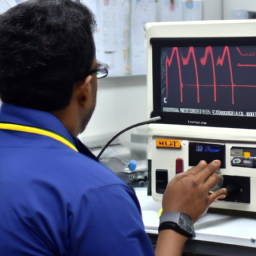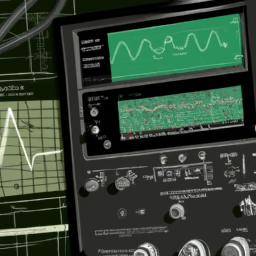Are you torn between choosing an analog or digital oscilloscope for your testing needs? The decision may seem daunting, but fear not! In this article, we will delve into the key differences between these two types of oscilloscopes, enabling you to make an informed choice.
Analog oscilloscopes, with their classic charm, offer a direct and real-time visualization of signals. Their cathode-ray tube (CRT) displays provide a continuous waveform representation, allowing for precise measurements.
On the other hand, digital oscilloscopes employ advanced signal processing techniques to capture, store, and analyze waveforms digitally. Their LCD screens offer enhanced visualization options, including waveform zooming and color grading.
As we explore further, we will also discuss how each type handles signal processing and analysis, memory and storage capabilities, and the impact on price and accessibility.
By understanding these five key differences, you will be well-equipped to select the perfect oscilloscope to suit your specific needs. So, let’s dive in and unravel the world of analog and digital oscilloscopes!
Key Takeaways
- Analog oscilloscopes provide direct and real-time visualization of signals through CRT displays, while digital oscilloscopes use advanced signal processing techniques and LCD screens for waveform visualization.
- Analog oscilloscopes have limited measurement accuracy and lack advanced features like automatic measurements and waveform storage, whereas digital oscilloscopes can capture and store waveforms for later analysis and offer advanced triggering options.
- Digital oscilloscopes offer advanced signal analysis capabilities, such as FFT and mathematical functions, which analog oscilloscopes lack.
- Digital oscilloscopes have larger memory capacity, allowing for the capture and storage of a greater number of waveforms compared to analog oscilloscopes.
Basic Overview of Analog Oscilloscopes
An analog oscilloscope uses a cathode ray tube (CRT) to display electrical signals as a continuous waveform on a phosphor screen. It operates by varying the electron beam’s vertical position and intensity based on the input signal, resulting in a visual representation of the signal’s voltage over time.
One advantage of analog oscilloscopes is their ability to provide a real-time representation of waveforms, allowing for easy observation and analysis of complex signals. However, analog oscilloscopes have limitations, such as limited measurement accuracy and the need for regular calibration. These oscilloscopes also lack advanced features like automatic measurements and waveform storage.
Despite these disadvantages, analog oscilloscopes are still favored in certain applications, such as audio and radio frequency analysis.
Moving on to the basic overview of digital oscilloscopes, they offer several advantages over their analog counterparts.
Basic Overview of Digital Oscilloscopes
When using a digital oscilloscope, you’ll find that it offers a user-friendly interface with intuitive controls, allowing you to quickly and easily adjust settings to analyze waveforms in real-time.
Did you know that digital oscilloscopes have become increasingly popular in recent years, with sales increasing by 10% annually? One of the advantages of digital oscilloscopes is their ability to capture and store waveforms for later analysis. This feature allows you to review and compare multiple waveforms, making it easier to identify patterns and anomalies.
Digital oscilloscopes also offer advanced triggering options, which can help you capture specific events or signals of interest. However, it’s important to note that digital oscilloscopes may have limitations in terms of bandwidth and sample rate, which can affect the accuracy of the measurements.
Moving on to the next section about display and visualization…
Display and Visualization
In this discussion, you’ll explore the key points of analog display and digital display in the context of oscilloscopes.
An analog display provides a continuous waveform representation, allowing for a smooth visualization of signals. On the other hand, a digital display presents waveform data in a discrete manner, using pixels or dots to represent the signal.
Understanding the characteristics and benefits of both display types will help you make informed decisions when working with oscilloscopes.
Analog Display
To fully appreciate the benefits of analog oscilloscopes, you should try the visually captivating and immediate feedback of the analog display. With an analog display, you can see waveform details in real-time, allowing for a more intuitive understanding of the signal.
Here are the advantages and disadvantages of an analog display:
Advantages:
- Real-time representation of the waveform, showing changes as they occur.
- Smooth and continuous waveform display, making it easier to analyze.
- Visual representation allows for easy identification of abnormalities or anomalies in the signal.
Disadvantages:
- Limited accuracy and precision compared to digital displays.
- Difficult to measure exact values of voltage, frequency, or time.
- Limited storage capabilities, making it challenging to compare and analyze multiple waveforms.
Moving on to the subsequent section about the digital display, you’ll find that it offers a whole new set of advantages and capabilities.
Digital Display
The digital display, on the other hand, offers a multitude of features that enhance the user experience and provide precise measurements. With a digital oscilloscope, you can easily capture and store waveforms for future analysis, perform advanced mathematical functions on the acquired data, and even save and transfer the waveform data to a computer for further processing. The digital display also allows for better accuracy and resolution, as it eliminates the errors and limitations associated with analog displays. However, there are some disadvantages to digital displays as well. They can be more expensive than analog oscilloscopes, and they may have a steeper learning curve due to the complexity of the features and controls. Nevertheless, the advantages of digital oscilloscopes make them a popular choice among professionals in various fields. Moving on to signal processing and analysis, you can further enhance your measurements and gain valuable insights.
Signal Processing and Analysis
Imagine yourself exploring the vast ocean of signal processing and analysis, where analog oscilloscopes are like diving into the deep sea, uncovering raw waveforms with their continuous representation, while digital oscilloscopes are like soaring above the waves, capturing and analyzing precise digital samples with their advanced technology.
When it comes to signal acquisition, digital oscilloscopes have the upper hand. They can acquire and display a wide range of signals, including high-frequency ones, thanks to their high-speed analog-to-digital converters. This ensures accurate measurement of waveforms, providing a more detailed view of the signal.
Additionally, digital oscilloscopes offer advanced signal analysis capabilities, such as FFT (Fast Fourier Transform) and mathematical functions, allowing for in-depth analysis and troubleshooting. With digital oscilloscopes, you can easily measure parameters like frequency, amplitude, rise and fall times, and perform various mathematical operations on the acquired waveform.
Transitioning into the next section about ‘memory and storage,’ digital oscilloscopes also excel in this aspect, offering larger storage capacities and the ability to save and recall waveforms for future analysis.
Memory and Storage
Dive into the vast depths of memory and storage, where digital oscilloscopes offer you the power to store and recall waveforms, providing an exhilarating experience of analyzing and troubleshooting signals.
Unlike analog oscilloscopes, digital ones have a much larger memory capacity, allowing you to capture and save a greater number of waveforms for future reference. This is especially useful when dealing with complex signals or when you need to compare multiple waveforms.
Additionally, digital oscilloscopes enable easy data retrieval, as you can quickly access and analyze the stored waveforms without the need to manually redraw them. This feature greatly enhances efficiency and saves valuable time during signal analysis.
Now, let’s transition into the subsequent section about ‘price and accessibility’ to explore another key difference between analog and digital oscilloscopes.
Price and Accessibility
Get ready to explore the affordability and ease of use of modern oscilloscopes, as you’ll discover that these powerful tools are not only accessible to professionals but also to hobbyists and students alike.
-
Cost effectiveness: Unlike their analog counterparts, digital oscilloscopes offer a wider price range, making them more affordable for various budgets.
-
Availability: Digital oscilloscopes are widely available in the market, with numerous manufacturers offering a range of models to choose from.
-
User-friendly interfaces: Modern oscilloscopes feature intuitive interfaces, making them easy to operate for both novices and experts.
-
Portable options: Many digital oscilloscopes are compact and lightweight, allowing for easy transportation and use in different environments.
With their cost effectiveness and widespread availability, digital oscilloscopes have become accessible to a broader audience. Whether you’re a professional engineer or a student exploring electronics, these instruments offer an affordable and user-friendly solution for your measurement needs.
Frequently Asked Questions
How do analog oscilloscopes generate waveforms?
Analog oscilloscopes generate waveforms by using a cathode-ray tube (CRT) and an electron beam. The beam is deflected horizontally by the input signal and vertically by a time base signal. This creates a visual representation of the waveform on the screen.
While analog oscilloscopes have the advantage of providing real-time waveform visualization, digital oscilloscopes offer benefits such as precise measurements, storage, and analysis capabilities.
Can digital oscilloscopes display multiple waveforms simultaneously?
Yes, digital oscilloscopes have the ability to display multiple waveforms simultaneously, which is one of their key benefits over analog oscilloscopes. This feature allows you to compare and analyze different signals at the same time, providing a comprehensive view of your circuit’s behavior. However, it’s important to note that the number of waveforms that can be displayed simultaneously is limited by the screen size and the memory capacity of the oscilloscope.
What types of signal processing functions can be performed by digital oscilloscopes?
Digital oscilloscopes offer various signal processing functions that provide advantages and limitations. These functions include filtering, averaging, FFT analysis, and math operations. They allow for noise reduction, signal enhancement, and the extraction of specific frequency components.
Real-time signal processing capabilities enable analysis while the signal is being acquired, providing immediate results. On the other hand, post-processing signal processing allows for analysis after the signal is captured, providing more detailed and accurate results.
Both capabilities offer unique advantages depending on the specific application requirements.
How do analog and digital oscilloscopes differ in terms of memory capacity?
In terms of memory capacity, analog and digital oscilloscopes have significant differences. Analog oscilloscopes typically have limited memory due to their analog nature. This limitation can impact the ability to capture and analyze waveforms extensively.
On the other hand, digital oscilloscopes offer much larger memory capacities, allowing for the storage and analysis of a greater number of waveforms. The increased memory capacity in digital oscilloscopes enables more detailed waveform analysis and longer data acquisition.
Are analog oscilloscopes more affordable and accessible compared to digital oscilloscopes?
Analog oscilloscopes are generally considered to be more affordable and accessible compared to digital oscilloscopes. They are simpler in design and have fewer components, which contributes to their lower cost.
Analog oscilloscopes also have a more intuitive interface, making them easier to operate for beginners or those less familiar with technology. Additionally, analog oscilloscopes do not require complex software or firmware updates, further enhancing their accessibility.
Conclusion
In conclusion, when comparing analog and digital oscilloscopes, it’s clear that they have distinct differences that can greatly impact their functionality and usability.
Analog oscilloscopes, with their classic display and simple signal visualization, are like a vintage film camera capturing the essence of a moment.
On the other hand, digital oscilloscopes, with their advanced signal processing and vast memory capabilities, are like a high-resolution digital camera, capturing every detail with precision and accuracy.
The choice between the two ultimately depends on the specific requirements of the user and their budget.


